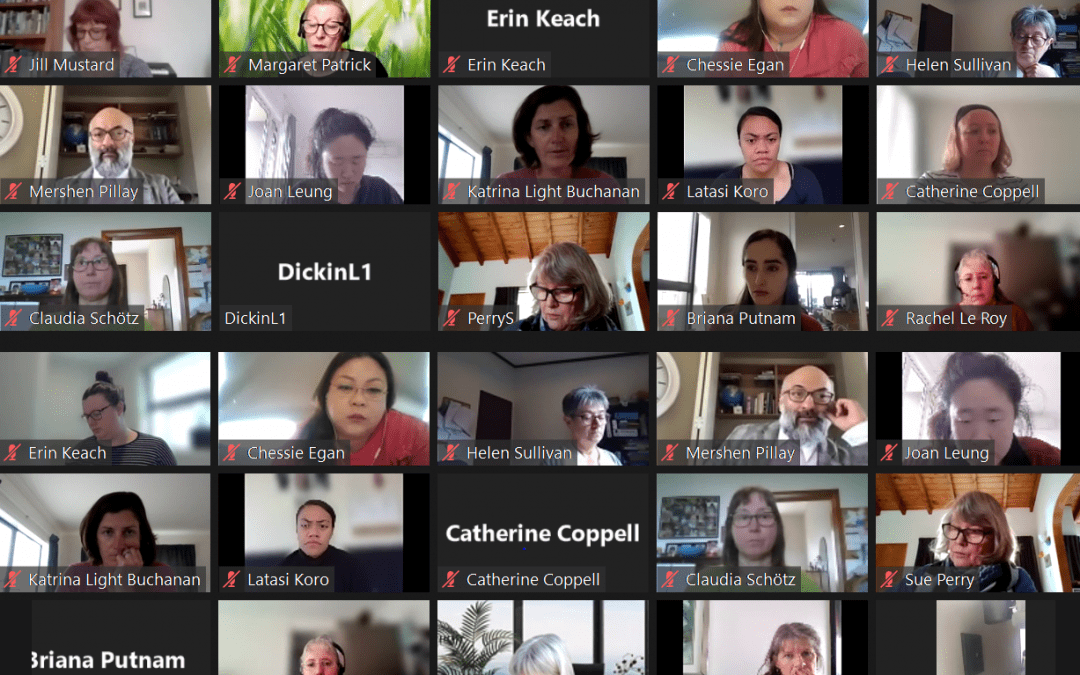It is well established that adequate access to sound is essential for language, emotional and cognitive development. Tamariki with hearing deficits experience lifelong challenges with communication that severely impact the quality of their life and their families.
Data provided by the The Universal Newborn Hearing Screening Programme (UNHSEIP) and the B4 School check (B4SC), both highlight unequal distribution of hearing loss by financial and ethnic demographic data points. The Pacific Islands Families Study indicates high prevalence of otitis media and hearing loss in Pasifika children. And reporting from the Deafness Notification Database shows that Māori tamariki are more likely than non-Māori tamariki to have hearing loss, this hearing loss is more likely to be bilateral and mild to moderate in severity.
Institutional bias that exists in the current model of health care results in significant barriers to Māori and Pasifika accessing health care and equitable outcomes. In other areas of health disparate outcomes extend beyond that that can be explained by social and economic factors indicating that there are factors that specifically disadvantage Māori and Pasifika people.
To start addressing the inequitable ear and hearing health of Maori and Pacific tamariki, the Eisdell Moore Centre funded a research project led by Dr Rebecca Garland (ORL, Pōneke) with clinicians Dr Rachelle Love (Ngā Puhi & Te Arawa, ORL, Ōtautahi), Dr Alice Springer (ORL, Pōneke), Kylie Bolland (Audiologist, Hutt Valley DHB) and Alehandrea Manuel (Ngāti Porou, Audiologist, EMC Māori Research Coordinator).
This project sought to consult widely with researchers, clinicians, educators and community representatives through an online survey and a series of hui that would discuss the issues for tamariki under five who miss out on successful hearing outcomes through poor access to hearing care services and structural and institutional inequities.
EMC staff, Dr Elizabeth Holt and Dr Meagan Barclay have supported the delivery of this project, where a series of virtual hui were held in the second half of 2021. The team was fortunate to connect with Change and Innovation Agent, Rebecca Davis, early in the project to facilitate the hui. Rebecca has extensive experience leading this kind of kōrero with iwi, DHB’s and health leaders. Discussions at the hui focussed on: “What is holding the problem in place”; “Reimagining a future reality” and “Activating your sphere of influence” and used the “The six conditions of systems change” as a framework for the discussion.
Highlights of the Kōrero.
There is a very clear need and “want” for change. There was a high level of interest and engagement in this mahi by professionals working across the sector; currently 137 professionals have engaged at some part of the process and there is a group of 40 – 50 professionals that are committed to being part of the solution and developing accessible and equitable ear and hearing care for tamariki.
Addressing institutional bias and racism requires the removal of deficit framing and victim blaming from discussions and turning the focus to the systems that keep inequities in place. It also requires individuals to self-reflect on their own biases, assumptions, and privileges and to challenge these. This is critical to ensure that services are culturally safe. The kōrero at the hui revealed that participants were at different points on their journey to being culturally safe, but through the course of the hui the narrative changed to focus on the systems that are keeping inequities in place. It also provided an opportunity for self-reflection and for further development of cultural safety within one’s own sphere. There was broad agreement in the group that there needs to be more cultural safety training in workplaces and in tertiary courses.
Accessibility of services was a major point of discussion, alongside accessibility/’readability’ of information provided to patients and whānau. It was recognised that the system is complicated and is set up for those that have the resource to navigate the system and there is a compounding nature of various issues that influence families’ ability to access and engage with health services. Whakawhanaungatanga and a representative workforce were identified as means to build trust with patients and to get “buy-in” with regards to interventions and treatments.
The siloed model of care was identified as a barrier to both families and clinicians and softening the boundaries between disciplines and collaborative, interdisciplinary approaches must be developed to support more holistic care of those with hearing loss.
We have recently completed a draft report of the discussions from the hui. This is available to download here
Next steps
Key themes that come out of the analysis will form the basis for establishing working groups in early 2022 that will further unpack the issues and potential solutions, identify research that is needed to support the work, and identify potential community projects that pilot solutions. There are opportunities for this research to flow through to policy and inform service delivery models for Health NZ and the Māori Health Authority.
While this series of hui brought together a range of professionals working in ear and hearing care, including researchers, clinicians and educators, whānau voice and lived experience of hearing loss and ear and hearing care services by Māori whānau and Pacific Island families must be collected to lay the foundation for this kaupapa. Several research projects that adopt Kaupapa Māori and Pacific research theory are underway in the EMC that can start to do this.
If you are interested in joining this Community of Practice to develop equitable ear and hearing care for all communities in Aotearoa, send the Eisdell Moore Centre an email (emcentre@auckland.ac.nz) and we will add you to the mailing list that provides updates and opportunities to get involved.
“The best time to embark on a worthwhile kaupapa is 20 years ago… the second best time is today.”
